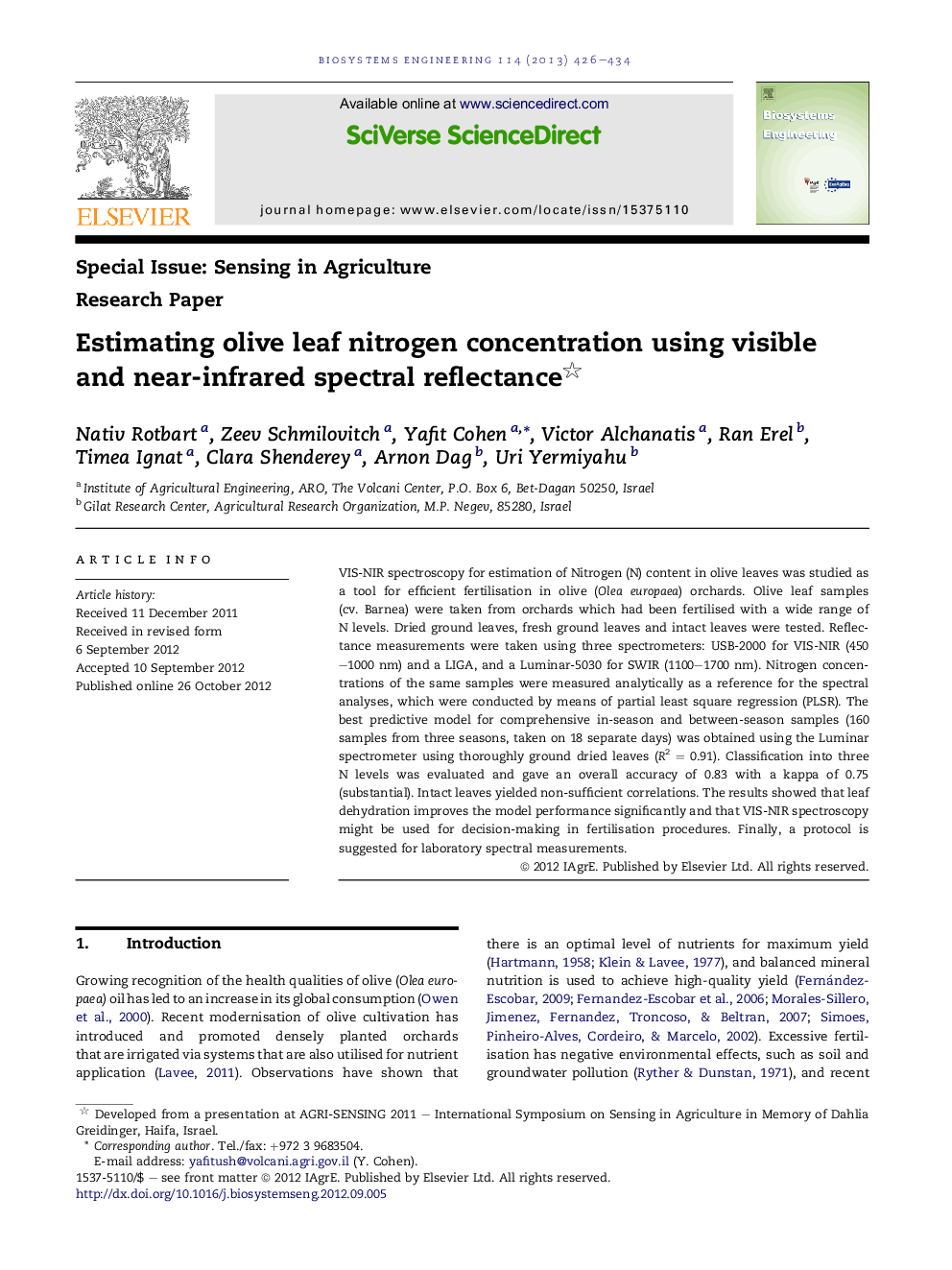| Article ID | Journal | Published Year | Pages | File Type |
|---|---|---|---|---|
| 1711377 | Biosystems Engineering | 2013 | 9 Pages |
VIS-NIR spectroscopy for estimation of Nitrogen (N) content in olive leaves was studied as a tool for efficient fertilisation in olive (Olea europaea) orchards. Olive leaf samples (cv. Barnea) were taken from orchards which had been fertilised with a wide range of N levels. Dried ground leaves, fresh ground leaves and intact leaves were tested. Reflectance measurements were taken using three spectrometers: USB-2000 for VIS-NIR (450–1000 nm) and a LIGA, and a Luminar-5030 for SWIR (1100–1700 nm). Nitrogen concentrations of the same samples were measured analytically as a reference for the spectral analyses, which were conducted by means of partial least square regression (PLSR). The best predictive model for comprehensive in-season and between-season samples (160 samples from three seasons, taken on 18 separate days) was obtained using the Luminar spectrometer using thoroughly ground dried leaves (R2 = 0.91). Classification into three N levels was evaluated and gave an overall accuracy of 0.83 with a kappa of 0.75 (substantial). Intact leaves yielded non-sufficient correlations. The results showed that leaf dehydration improves the model performance significantly and that VIS-NIR spectroscopy might be used for decision-making in fertilisation procedures. Finally, a protocol is suggested for laboratory spectral measurements.
► Robust spectral prediction model to evaluate N in olive leaves was developed. ► Best prediction model obtained using a dual-beam spectrometer and well-ground dry leaves. ► Water content conceals part of N effect on the spectral reflectance. ► Optimal evaluation of N level achieved by laboratory spectral measurements protocol.
